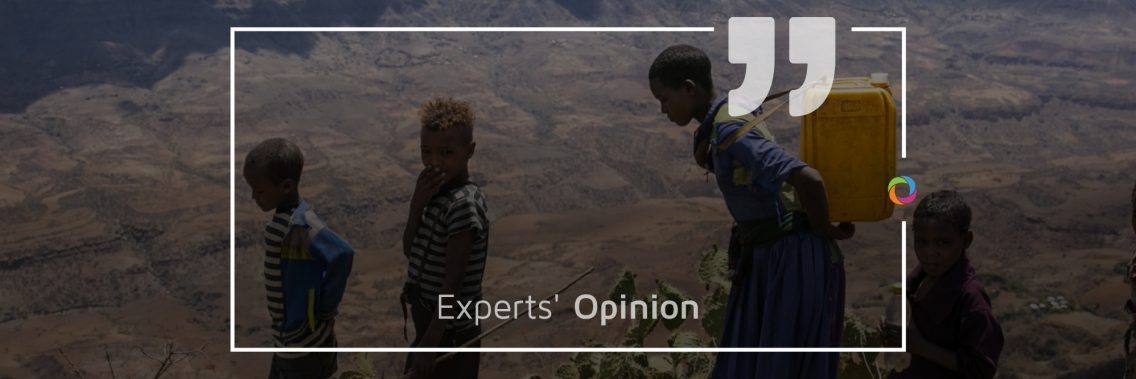The beginning of this year’s summer has taken many countries by surprise bringing with it heavy rains and cooler temperatures caused by the La Niña climate pattern. This phenomenon is characterized by unusually cold ocean temperatures in the Equatorial Pacific which cause an increased number of tropical storms in the Pacific Ocean. The event has caused extreme weather in many parts of the world, affecting both agriculture and food security. Read what some agricultural experts have said regarding these impacts and the results of La Nina’s contrasting climate pattern, El Nino.
What are the consequences of La Niña on agriculture and food security, both positive and negative?

“The El Nino-Southern Oscillation (ENSO) has existed as a climatic phenomenon for centuries, if not for thousands of years. With the discovery of the New World, mankind was able to better understand the magnitude of its effect across the oceans. And, in more recent times, satellite imagery has provided us with better insight. La Nina is the opposite to El Nino. A typical oscillation sequence is “normally” a five-year cycle although in the past 50 years the cycles seem to have been shorter. Seawater temperatures can vary by 2-3 C degrees during ENSO and in recent times it’s very easy to associate sea level rise, a reduced fishing catch, and weather patterns as symptoms of climate change – yet ENSO existed long before the accumulation of greenhouse gases/global warming that is presumed to be related to the increased utilization of fossil fuels. Similar to El Nino, the effects of La Nina are not uniform across the globe with some regions experiencing lower temperatures and decreased rainfall whereas in other regions the converse applies. In the Central Pacific, La Nina results in cooler temperatures and drought conditions and this has a significant impact on agriculture, for example dry biomass increases the frequency and severity of bushfires, lower forage production and drinking water availability which results in destocking, livestock and game animals losing body mass, productivity and even mortality from starvation/thirst, poor harvests/crop failure for rain-fed crops, irrigated agriculture suffering from increased water demand when reservoirs are not fully recharged, reduced output from aquifers, salt water intrusion in coastal areas, a further reduction of endangered and threatened plant and animal species, a reduction in tree biomass production, an overall reduction in supply causing food price inflation and less access for poor/vulnerable households, denuded areas resulting in erosion/siltation and landslides when El Nino returns, wildlife encroaching on cropland – including high value crops such as vegetable fields, labor retrenchment in the agriculture value chain affecting the economies of rural communities and transmigration, destitute farmers entering foreclosure, well developed economies providing limited drought relief/mitigation measures, fewer hurricanes/cyclones, a reduction in dietary diversity with low productivity from home gardens, low milk production, low fruit yields and expensive off-farm food products, increased payouts on index-based weather insurance, increased relief feeding for vulnerable households, a revival of discussions about strategic food reserves.”

“The severity of the impact depends on its interaction with other weather conditions, seasonality, and vulnerability factors related to the region and countries. Importantly, the impacts are severe and long-lasting among economically poor countries with the minimal potential for disaster management. Literature reports the negative impacts of La Niña around the world. For instance, in Africa, it caused severe dry conditions in Ethiopia, Kenya, and Somalia, resulting in crop failure, affecting livestock production, and causing excessive animal mortality while Madagascar, Mozambique, and Zimbabwe reported risks to agricultural production with wet conditions. In Asia, similar experiences are reported in Afghanistan, Iraq, Pakistan, Indonesia, Philippines, Papua New Guinea, and the Solomon Islands. Australia reported disastrous floods and loss of agricultural production and other property in the northern parts of Australia. La Niña brings some positive impacts as well. Enhanced rainfall could benefit crop development in some areas associated with drier-than-normal weather for a long period, especially in Africa. For instance, it brings relief to areas often impacted by droughts, enhances the regeneration of pasture lands, and thus higher crop yields. The same occurs with the expected drier weather where rainfall is too much, for instance, the reduced likelihood of typhoons and easier post-harvest crop management in Asia. La Niña also reports positive gains in the fishing industry, for instance, more fishing is reported in western South America and some parts of Canada with the La Niña effect.”

“La Niña has a number of both positive and negative developmental impacts concerning agriculture and food security. These may include the impacts of the opposite conditions of flooding and drought directly affecting crop yields and prices with consequent indirect impacts on water security and economic growth. As regards food security, the impact of La Niña on planting, crop yields, and agricultural prices varies according to geographical location. There is some evidence to suggest that La Niña generally has a positive impact on agriculture, especially rice production in much of Southeast Asia, whereas it has a detrimental impact on agricultural production in East Africa with a substantial decrease in the yields of major crops, such as maize, which tend to be lower than normal. On the other hand, the evidence of the impact of La Niña on economic growth is inconsistent, depending on the respective economies, whether it concerns fragile and conflict-affected areas, lower income countries, etc. This is through the impact on prices, infrastructure, power generation, and economic stability in general.”

“Guatemala is consistently listed among the world’s top 10 countries to be affected by climate change. Increasingly erratic climate patterns have caused repeated failed harvests which progressively put most vulnerable populations (indigenous people) at risk of prolonged food insecurity. Seasonal rains during the months of May, June, and July of 2021 caused extensive flooding in areas previously impacted by Eta and Iota which is having a larger cumulative risk for the lives, health, and safety of the overall population, especially for indigenous people. Just during the first days of the month of July, CONRED1 responded to 27 emergencies in 13 departments of Guatemala due to extensive floods, flash floods, strong winds and mudslides; 68,000 people were directly affected, 99 houses suffered severe damage and there was one death. At the moment, 300,000 families have lost their crops and thus their livelihood because of the “canícula”, a pattern that maintained summer-like heat and rainless days during the first semester of 2021. WMO has forecast above-average temperatures for most of July and August which is again jeopardizing crops. In contrast, the ending of La Niña aligns with TSR2’s forecast of 16 storms of which 10 hurricanes are likely to occur during the last quarter of the 2021 season. The overall impact of such hydro-meteorological dynamics is 5.3 million people along the “Dry Corridor” facing life-threatening hazards that severely reduce their resilience to climate change, more specifically rural villages along the Polochic River basin in Alta Verapaz where acute malnutrition has doubled in comparison to other regions in Guatemala; likewise, this area is red-flagged due to the extensive spread of SARS-COV-19. Therefore, it is of utmost importance to act more rigorously not only with emergency preparedness plans but also by adopting mechanisms to mitigate and adapt to the effects of climate change.”
Check out more than 180 job opportunities in the agriculture sector here.

